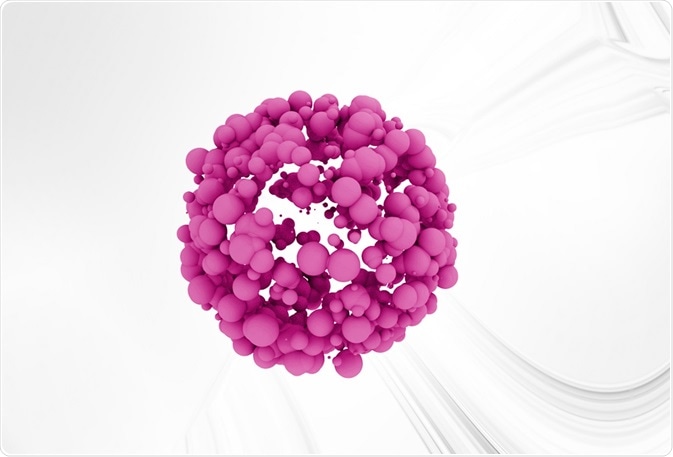Anti-counterfeiting technology helps establish the authenticity of biomaterials, particularly in the field of medicine.
 Image Credit: GiroScience / Shutterstock
Image Credit: GiroScience / Shutterstock
Biomaterials are substances which are introduced in to a living system where they can integrate and interact with native cells and tissues. Biomaterials are most commonly employed in the field of medicine; in joint replacement, skin repair, heart valves, dental implants and others.
These counterfeit methods can be divided into the following categories: overt/visible features, hidden or covert features, forensic methods, and trace methods.
Overt/visible methods
Overt or visible features can help in establishing the authenticity of a substance. Although these features are visible, they are difficult and expensive to replicate. These include holograms, optically variable devices, color shifting inks, security graphics, and sequential product numbering.
Holograms contain a three-dimensional image, with depth and separation. They are usually part of the package, but are easily copied or simulated with counterfeit products being less effective. However, color shifting inks which change their color based on the viewing angle can be added to the security seal, and the dynamics of the color change provide proof of authenticity.
Covert/hidden features
These features are hidden as the name points out and their presence is generally not known to the public.
Invisible ink
This method uses special inks which mark the substance and can only be seen in light of specific wavelengths, such as UV or Infrared (IR). They can be made such that they show different colors at different wavelengths.
Embedded image
This method involves embedding an image in the pack graphics which can only be viewed under specific filters. These cannot be reproduced easily.
Digital watermarks
These include graphic elements which can only be read by a reader and software. This information is invisible to humans, and any effect to replicate it can lead to degradation of the watermarks.
Although covert features are a better anti-counterfeit method than the overt ones, an expert can replicate many of the covert features. The most secure methods to prevent counterfeiting include forensic techniques and they can be conveniently applied to biomaterials.
Forensic features
This method employs high end technology and requires specific test kits or testing in the lab to test the authenticity.
Chemical tagging
Trace chemicals can be added to the materials which can only be detected by specific systems to provide an effective anti-counterfeit method.
Biological tagging
These involve addition of biological markers at very low levels to the material (parts per million). This is also a highly specific method of tagging which cannot be unlocked using conventional methods.
DNA tagging
DNA can provide a very specific ‘lock and key’ method to detect a material. It would require a “mirror-image recombinant strand” to recognize and unlock the code.
Isotope ratios
Naturally occurring isotopes can be added which can only be identified using laser florescence or magnetic resonance techniques. The detection of this marker involves highly specialized lab equipment.
Fabrication or use of inauthentic biomaterials can prove detrimental to the health and life of subjects in whom they may be used. Thus, it is critical to establish methods to determine the authenticity of biomaterials.
Forensic technology provides the highest amount of security but they involve licensed technology, which is costly and not easily available to general public. They are difficult to be implemented and require certain degree of expertise.
Further Reading